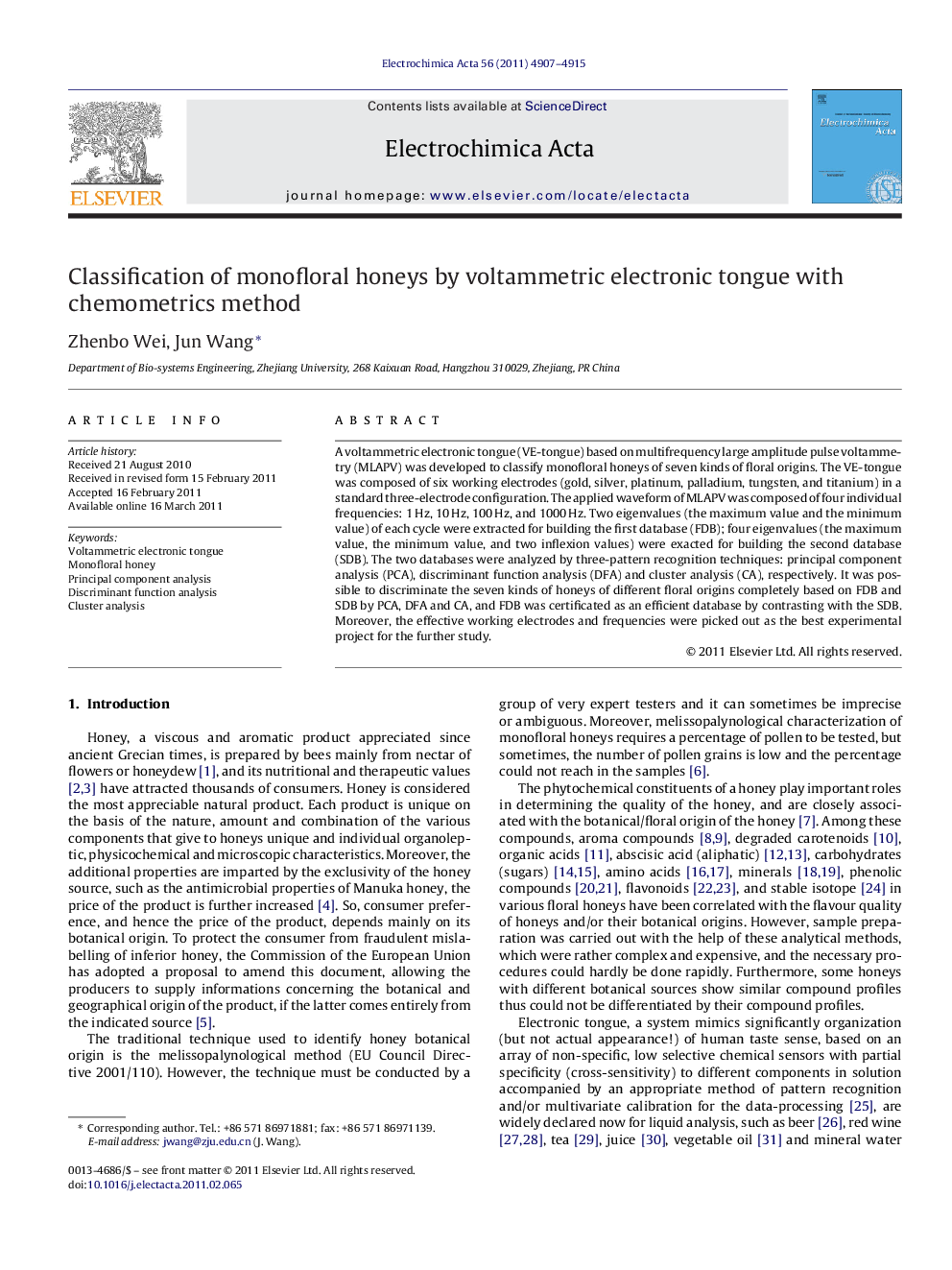| Article ID | Journal | Published Year | Pages | File Type |
|---|---|---|---|---|
| 189972 | Electrochimica Acta | 2011 | 9 Pages |
A voltammetric electronic tongue (VE-tongue) based on multifrequency large amplitude pulse voltammetry (MLAPV) was developed to classify monofloral honeys of seven kinds of floral origins. The VE-tongue was composed of six working electrodes (gold, silver, platinum, palladium, tungsten, and titanium) in a standard three-electrode configuration. The applied waveform of MLAPV was composed of four individual frequencies: 1 Hz, 10 Hz, 100 Hz, and 1000 Hz. Two eigenvalues (the maximum value and the minimum value) of each cycle were extracted for building the first database (FDB); four eigenvalues (the maximum value, the minimum value, and two inflexion values) were exacted for building the second database (SDB). The two databases were analyzed by three-pattern recognition techniques: principal component analysis (PCA), discriminant function analysis (DFA) and cluster analysis (CA), respectively. It was possible to discriminate the seven kinds of honeys of different floral origins completely based on FDB and SDB by PCA, DFA and CA, and FDB was certificated as an efficient database by contrasting with the SDB. Moreover, the effective working electrodes and frequencies were picked out as the best experimental project for the further study.
► We self-developed a voltammetric electronic tongue based on new sensors array. ► We advanced a new method to extract eigenvalues from signals obtained by VE-tongue. ► We first detected the monofloral honeys of different floral origins using VE-tongue.
